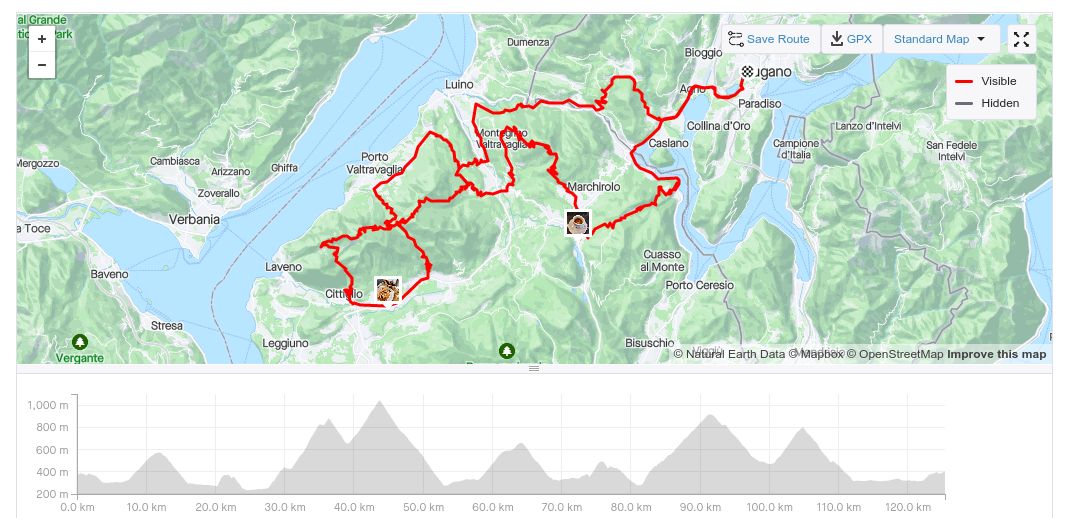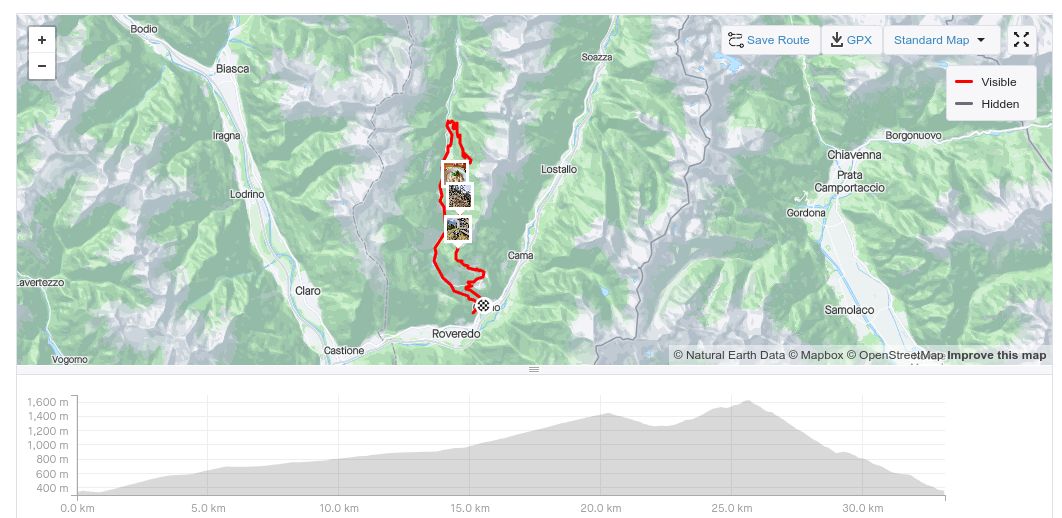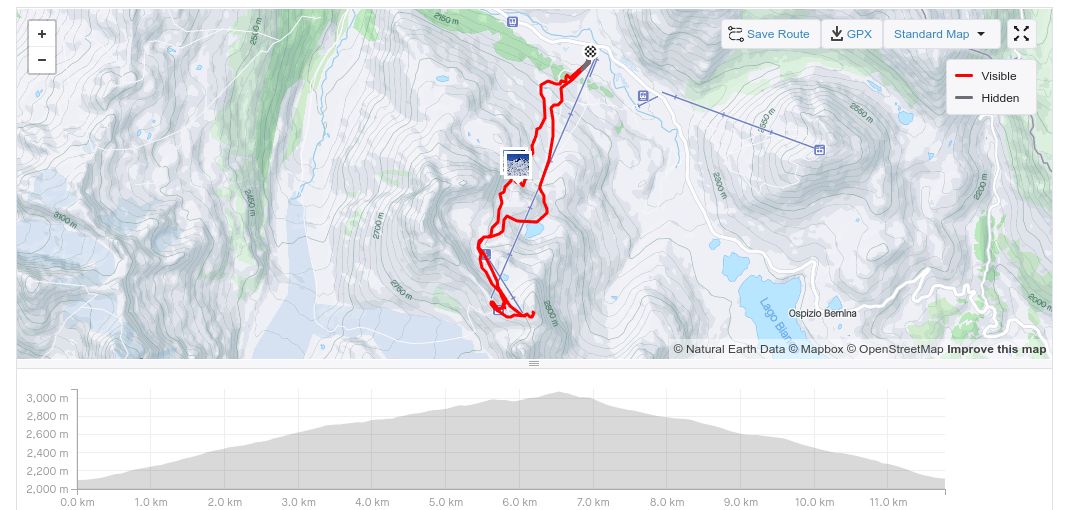For several years now, I have been planning the day tours based on the “average gradient metric”. This article explains the rationale behind the metric how to initially assess and plan the toughness level of the activity whether it is Road cycling, Enduro Mountain Bike, Skitouring or Hiking.
Summary
The metric below is the indicator to quickly assess the sport activities in terms of difficulty. Metric gives the idea how tough the activity could be. By having the metric, you can be sure, that the activity won’t be easier and it can be even tougher based on the environmental conditions, your actual stamina or other factors encountered during the activity.
- The activity can still include very demanding sections not reflected in the metric itself
- The metric does not reflect the duration of the activity (how much time the athlete needs to complete the activity)
| Table of contents |
|---|
| Definition of the Metric |
| Explanation |
| Application |
Metric
The calculation of the metric is very easy. There are only two variables, the distance of the planned activity in kilometers and the planned vertical meters to be ascended during entire activity. Descending meters are not applied within the calculation.
To get the Metric, the vertical meters are divided by the distance of the activity. Table below shows some examples how to calculate the metric.
| Activity Type | Length | Vertical Meters | Ratio | Metric | Calculation |
|---|---|---|---|---|---|
| Road Bike | 100 km | 1000 m | 1:10 | 10 | 1000 / 100 |
| Enduro Mountain Bike | 33 km | 900 m | 1:27 | 27 | 900 / 33 |
| Skitouring | 15 km | 1500 m | 1:100 | 100 | 1500 / 15 |
| Hiking | 10 km | 1200 m | 1:120 | 120 | 1200 10 |
The ratio is written in the format of X:Y, where X is always 1 (1 kilometer) and Y is the metric. We say:
- Within same activity type, the activity X is tougher than activity Y if metric X is higher than metric Y
- Within same activity type, the activity with the ratio 1:30 is tougher than the activity with the ratio of 1:10
- Within same activity type, the activity with the metric 30 is tougher than the activity with the metric of 10
Metric Explanation
The metric should only be compared within the same activity type, as the conditions within the same type of activities are more likely to be similar (e.g. Road bike vs. Road bike) and not across (e.g. Road bike vs. MTB).
Why is it a case ? Let’s take a closer look:
| Activity Type | Metric Explanation |
|---|---|
| Road Bike | Rides for the road cycling are mostly planned on the paved roads where also the very ordinary car could pass as well. The metric goes mostly up to 1:30. In average, the rides could be around 1:20 (such as 80 km and 1600 vertical meters), and the rides above 1:30 are considered demanding (100 km and 3000 vertical meters). However, the ride of 1:05 means one would go way much faster, thus feeling more head wind (also impacted by head wind more) and one might also require better clothing. |
| Enduro Mountain Bike | Enduro Mountain Bike activities have usually sections that requires lots of instant energy. One can carry the bike on the shoulders or push bike to the very steep and short hills. Also, the pedaling on the unpaved roads or trails through the leaves, rocks, roots take the energy even more. On the other hand, descending is rewarded by the nice downhills. Typical ratio is around 1:30 (20 km and 600 vertical meters) and goes up to 1:50 (with hike&bike sections). Rides with less than 1:20 ratio may be without steeper sections, classified as a cross-country rides. |
| Skitouring | Most of the slab avalanches triggers from 30-degree slopes. If such slope would be 1 km long, we would make 577 vertical meters from bottom to the top, that would make impressive ratio of 1:577. Safe skitour on 20 degree slope would require 364 vertical meters for 1 km. Metric on the skitours is typically around 1:100. On other hand, skitours with less than 1:50 ratio feels flat and during descents skier may not be able to accumulate enough speed for turns in the deeper snow. |
| Hiking | Hiking activities can include sections such as climbing up the ladder straight up, climbing the rocks and so on. Such activities have typically the highest metric of the listed activity types. |
Application of the metric
As mentioned above, the ratio can be compared within the same activity types only. We will see on the examples below, that where 1:85 in skitour is relatively fine, Road Bike activities with such ratio would be impossible to make.
Road Bike
Ratio for this road ride is 1:26. One can expect a demanding road cycling ride. In total, it was 126 km and 3300 vertical meters.

Enduro Mountain Bike
This particular Enduro MTB rides had a ratio of 1:46, it was 33 km and 1550 vertical meters, and some hike&bike sections. The profile of the ride shows that there is ascending for more than 25 kilometers and then descend/downhill for the rest of the ride.
In comparison with Road ride, road rides with a ratio of 1:46 would be very challenging and aimed for professional riders.

Skitouring
Skitour on Diavolezza is relatively easy tour on marked and maintained route. The ratio is 1:85. One does about 1000 vertical meters on 6.5 kilometers. Total route is 11 km including the descent.
Cycling activities with typical skitour ratio are impossible to make. It’s so steep, that it is impossible to pedal. Even sooner, the bikes tires will loose the traction.

Hiking
The example below is a Hike activity with 1170 vertical meters and 11 kilometers of length. Ratio for this activity is 1:106. One can expect steep sections.
Although the ratio is similar that one for skitour, the hiking paths might be too steep for skitour and in this example are too narrow for skiing down.

Last observations
The metric and the activity ratio is just a number. Some athletes prefer climbing, some interval sprints. One can consider some activity difficult, and for others it is a piece of cake.
As a reminder, the metric does not reflect the duration of the activity. The activity with ratio of 1:10 might still include 150 km and several hours to complete and may be more demanding than 5 km activity with 1:30 ratio.
And, always evaluate the metric based on your physiologic disposition.